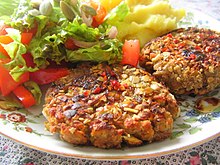How to Recycle Your Used Electronics
From Apple iPhones to HP ink-jet printer cartridges, recycling e-waste is easy.

Photo: Istock
By Brian Clark Howard
Most people love getting new gadgets for the holidays, whether they are tech-savvy professionals or folks who never figured out how to program their VCRs or set up a Facebook page.
But the burgeoning market of electronics and accelerating pace of technology have meant increased environmental impact. This is perhaps never more true than after the holidays, when people clean out their old gear in favor of the new shiny toys and appliances they have just received, or purchased through gifts, bonuses or seasonal sales. With the 2009 change in TV transmissions around the corner, even more e-waste is being generated. Plus, consider that the average cell phone user changes handsets every 18 months.
The good news is awareness of the potential ecological impact is also rising, and there are ways to make a difference, especially at the end of your product's life.
It's no small step, considering that 20 to 50 million tons of electronics waste (often called e-waste) is discarded globally every year, according to Greenpeace. If all that e-rubbish were put into containers on a train it would go once around the world! E-waste is the fastest growing component of the municipal solid waste stream, and currently makes up five percent of all municipal solid waste.
In the past, no one thought of recycling computers and other electronics. The only option was tossing them on the curb. But these days engineers have taken notice that electronics usually contain a wealth of valuable materials. Plus, recycling almost always means lower net carbon emissions, which is something everyone is now paying closer attention to because of global warming. Finally, electronics are made with a sizable amount of lead, cadmium, brominated fire retardants and plastics that can leach toxic breakdown products — that's stuff no one wants in their water supply!
The Consumer Electronics Association, which represents electronics manufacturers, encourages people to recycle their e-waste, and has set up a handy Website to make the process simple. Log on to mygreenelectronics.org, where you can search for local recycling drop-off points by zip code and product category. You'll also find tips and info on electronics recycling, and a cool energy calculator that will show you how much juice each product uses.
How to Recycle E-Waste, by Brand
Read more: http://www.thedailygreen.com/green-homes/latest/computer-recycling-electronics-recycling-461219#ixzz19YRkfTeN







 The Environmental Working Group
The Environmental Working Group  The next time you're looking to fireproof something forget trekking down to the hardware store, instead check the fridge and grab a stick of butter.
The next time you're looking to fireproof something forget trekking down to the hardware store, instead check the fridge and grab a stick of butter.
 via
via 

